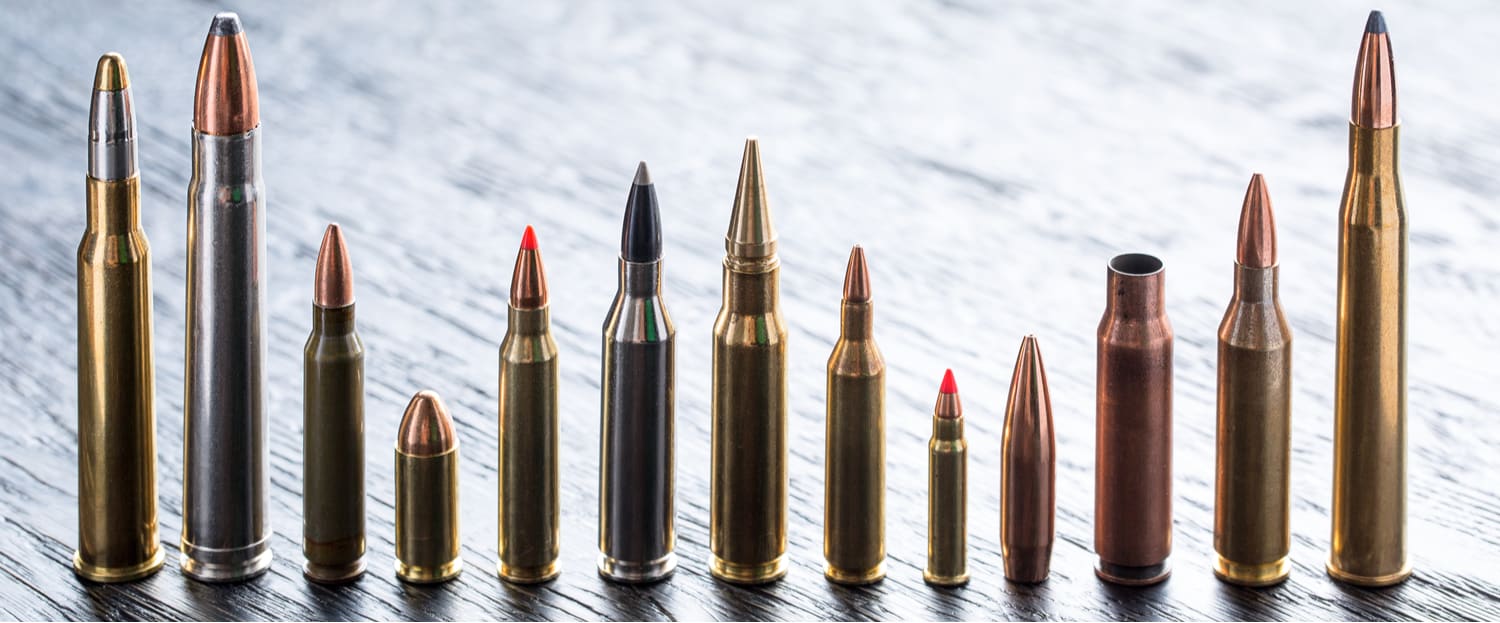Understanding ammunition types and calibers is essential for firearm owners and enthusiasts alike. This comprehensive guide provides detailed information on various types of ammunition, their calibers, uses, and characteristics.
Introduction to Ammo Types & Calibers:
Ammunition serves as the fuel for firearms, consisting of a cartridge case, primer, propellant, and projectile. Ammo types and calibers vary widely, catering to different firearms, purposes, and shooting preferences.
Basic Components of Ammunition:
- Cartridge Case: The container that holds the other components of the cartridge, including the primer, propellant, and projectile.
- Primer: The ignition component that initiates the propellant’s combustion when struck by the firing pin.
- Propellant: The chemical substance that burns rapidly to generate gas pressure, propelling the projectile out of the firearm.
- Projectile: The bullet or shot that is propelled out of the firearm toward the target.
Understanding Caliber:
Caliber refers to the diameter of the projectile or bore of the firearm, typically measured in inches or millimeters. Caliber designation often includes additional information about the cartridge’s length, case shape, and specific characteristics.
Common Ammo Types:
- Handgun Ammunition: Used in pistols and revolvers, handgun ammunition comes in various calibers, including .22 LR, 9mm, .45 ACP, and .357 Magnum.
- Rifle Ammunition: Rifle cartridges are designed for use in rifles and come in calibers such as .223 Remington, .308 Winchester, .30-06 Springfield, and .50 BMG.
- Shotgun Ammunition: Shotshells are used in shotguns for hunting, sport shooting, and self-defense. Types include birdshot, buckshot, and slugs.
Common Calibers and Characteristics:
- .22 LR (Long Rifle): A popular rimfire cartridge used for target shooting, plinking, and small game hunting.
- 9mm Luger: A versatile and widely used handgun caliber suitable for self-defense, target shooting, and law enforcement.
- .223 Remington / 5.56x45mm NATO: Common rifle calibers used for varmint hunting, target shooting, and military applications.
- .308 Winchester / 7.62x51mm NATO: A popular rifle caliber known for its accuracy and versatility, used for hunting, long-range shooting, and military sniping.
- 12 Gauge: The most common shotgun caliber, offering a wide range of loads for hunting, sport shooting, and home defense.
Specialty Ammo Types:
- Hollow Point: Designed to expand upon impact, causing greater tissue damage and stopping power, commonly used for self-defense.
- Full Metal Jacket (FMJ): Features a lead core encased in a metal jacket, ideal for target shooting and training due to its penetration and reliability.
- Soft Point: Combines the expansion characteristics of a hollow point with the penetration of an FMJ, suitable for hunting medium-sized game.
- Tracer: Contains a pyrotechnic compound that ignites upon firing, producing a visible tracer path for tracking shots during low-light conditions or training exercises.
Considerations When Choosing Ammo:
- Purpose: Determine the intended use of the ammunition, such as self-defense, hunting, target shooting, or competition.
- Firearm Compatibility: Ensure the ammunition is compatible with the firearm’s chambering and barrel specifications.
- Ballistics: Consider factors such as bullet weight, velocity, and trajectory to match the ammunition to the shooting scenario and desired performance.
- Cost and Availability: Assess the cost and availability of ammunition, considering factors such as budget constraints and local availability.
Ammo Storage and Handling:
- Dry and Cool Environment: Store ammunition in a dry, cool environment away from moisture and extreme temperatures to prevent corrosion and degradation.
- Secure Containers: Use sturdy containers or ammo cans to store ammunition securely and prevent unauthorized access.
- Avoid Rough Handling: Handle ammunition with care to prevent damage to cartridges or components that may affect performance.
Legal Considerations:
- Compliance with Laws: Ensure compliance with federal, state, and local laws regarding the purchase, possession, and transportation of ammunition.
- Restrictions on Certain Types: Be aware of any restrictions on certain types of ammunition, such as armor-piercing or incendiary rounds, which may be regulated or prohibited.
- Background Checks: Understand requirements for background checks or permits when purchasing certain types of ammunition in some jurisdictions.
Conclusion:
Ammo types & calibers play a crucial role in firearm performance, effectiveness, and versatility. By understanding the characteristics, uses, and considerations associated with different types of ammunition, firearm owners can make informed choices to enhance their shooting experience and achieve desired outcomes. Whether you’re a novice shooter or a seasoned enthusiast, knowledge of ammo types and calibers empowers you to select the right ammunition for your firearms, ensuring optimal performance and safety in various shooting scenarios.

